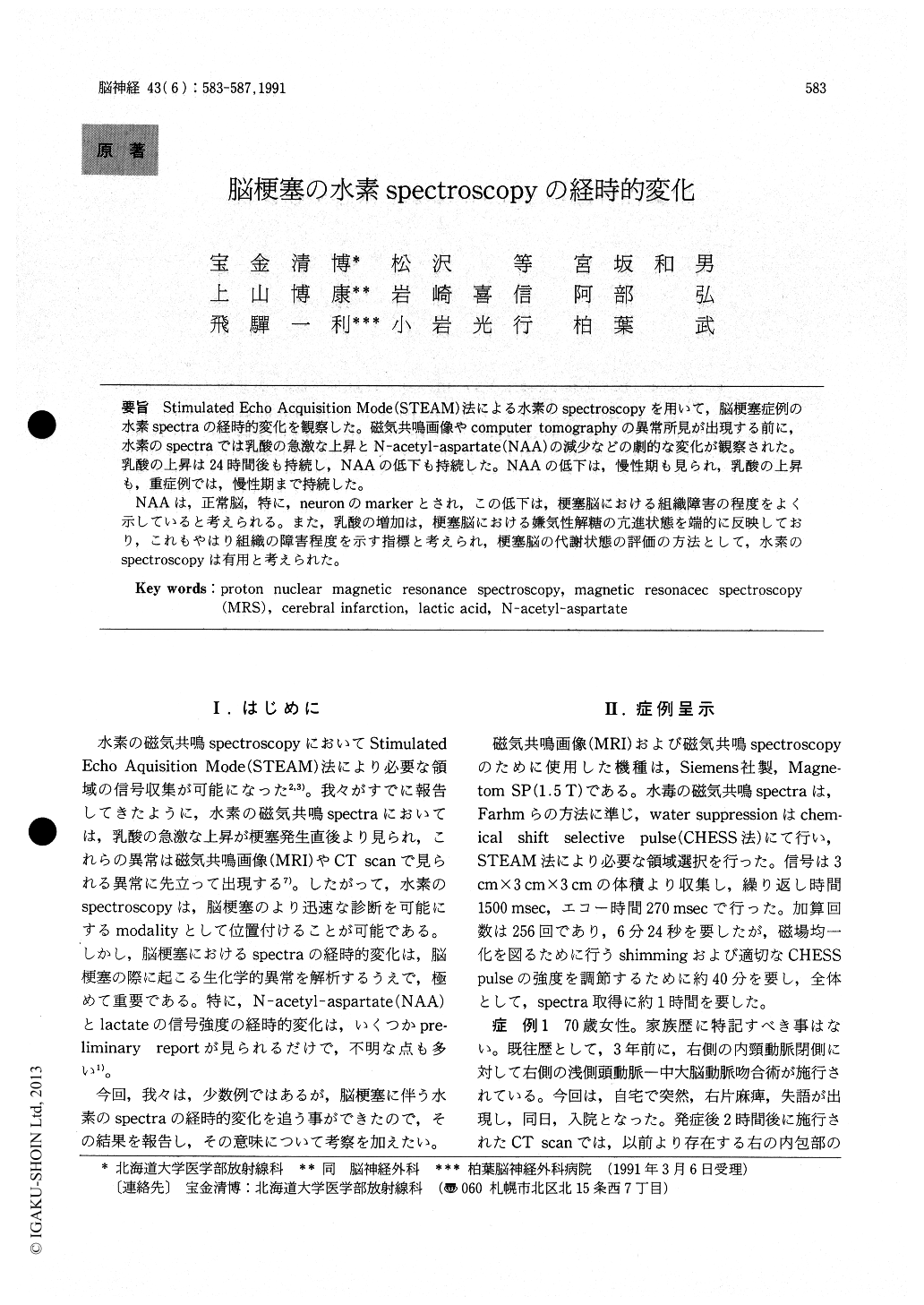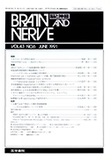Japanese
English
- 有料閲覧
- Abstract 文献概要
- 1ページ目 Look Inside
Stimulated Echo Acquisition Mode(STEAM)法による水素のspectroscopyを用いて,脳梗塞症例の水素spectraの経時的変化を観察した。磁気共鳴画像やcomputer tomographyの異常所見が出現する前に,水素のspectraでは乳酸の急激な上昇とN-acetyl-aspartate(NAA)の減少などの劇的な変化が観察された。乳酸の上昇は24時間後も持続し,NAAの低下も持続した。NAAの低下は,慢性期も見られ,乳酸の上昇も,重症例では,慢性期まで持続した。
NAAは,正常脳,特に,neuronのmarkerとされ,この低下は,梗塞脳における組織障害の程度をよく示していると考えられる。また,乳酸の増加は,梗塞脳における嫌気性解糖の亢進状態を端的に反映しており,これもやはり組織の障害程度を示す指標と考えられ,梗塞脳の代謝状態の評価の方法として,水素のspectroscopyは有用と考えられた。
Longitudinal change of the proton spectroscopy was observed in 2 cases of cerebral infarction. Proton spectra was acquired utilizing stimulated echo acquisition mode (STEAM) . In acute stage, the increase of lactic acid and decrease of N-acetyl-aspartic acid (NAA) was observed prior to the appearance of abnormality in imagings such as magnetic resonance imaging and computer tomo-graphy. The increase of lactic acid was observed in subacute stage and chronic stage (in severe case). The decrease of NAA persisted in chronic stage.
The increase of lactic acid and decrease of NAA indicate a damage of the ischemic tissue. The degree of the decrease of the NAA seems to be a reasonable indicator of the viability of the damaged tissue. The proton spectroscopy is a powerful modality for the evaluation of the extent of tissue damage caused by the ischemic insult.

Copyright © 1991, Igaku-Shoin Ltd. All rights reserved.


